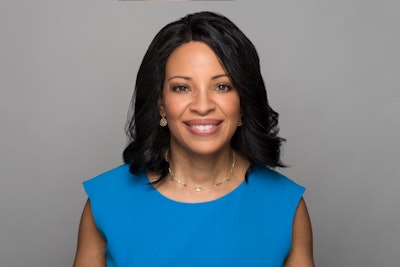Last year colleges and universities were forced to temporarily close their doors as COVID-19 spread throughout the country. Virtual instruction became the norm as institutions worked to continue with classes while mitigating transmission risks, and meeting students’ basic needs became the focal point as food and housing insecurity were exacerbated by the pandemic. Finding affordable childcare also became a challenge for students working to learn with children at home.
“All of those things had to be rethought quickly to happen remotely,” says Monica Parrish Trent, vice president for network engagement at Achieving the Dream. “I think in a good way, it challenged colleges to think about how can we improve our systems so that there is continuity of instruction when people can’t come to campus. I think that many of our colleges rose to the occasion and we want to see them continue with those efforts.”
Many institutions set up Wi-Fi hotspots in parking lots, and most scrambled to meet the demand for devices for students. Leaders re-thought ways to provide students with a quiet place to study and access to library resources and other academic support, such as tutoring virtually.
Community college students hit hard
Community college students were among the most impacted. Seventy-two percent of part-time and 62% of full-time community college students work, and many faced unemployment, according to Dr. Martha M. Parham, senior vice president of public relations at the American Association of Community Colleges.
 Monica Parrish Trent
Monica Parrish TrentDue to the high number of individuals needing a job to pay for their education, staff at Clinton Community College in New York, for example, worked to find emergency loan assistance and other financial aid opportunities for students to complete their degrees.
“This is probably the first time many of us have experienced anything this drastic that would impact higher ed in such a way,” says John J. Borner, dean of student affairs at Clinton Community College. “It has really been not only a learning process but, I think, a time of great creativity. An adoption of new ideas or new ways of doing things.”
All of the added burdens significantly impacted students’ mental health, leaving them feeling isolated.
For 20% of college students in general, their mental health has significantly worsened due to COVID-19. While 74% of students face difficulties in maintaining a routine, 38% have trouble focusing on their studies, according to an Active Minds study.
To allow students to remain connected to campus, CCC’s Student Activities Board developed activities, and on-campus clubs and organizations remained active through a virtual setting.
“That is important because the community, I think, is a big sense of giving students at least some normalcy in a year or so where it is just so challenging,” says Borner.
Additionally, by serving on campus-wide committees such as the board of trustees, students offer insight about their needs and concerns first-hand.
“They do a great job of letting us know what is on the minds of students and what are some things that we could do to assist students get through this time,” says Borner.
Re-engaging students
Over the summer, some institutions shifted their focus to investing in professional development opportunities for faculty and staff to improve the ways they would provide remote instruction to prepare for the fall semester.
But the murder of George Floyd by Minneapolis police and the ensuing protests across the country again necessitated professional development around culturally-responsive pedagogy, race and racism and how to create a more inclusive classroom.
 Susan Mayer
Susan Mayer“There is the need for professional development to continue to build a culture of equity and improve outcomes, but also to be responsive to what our students may be feeling and experiencing,” says Trent.
During the fall semester, community colleges overall faced enrollment declines. Freshman enrollment dropped by 19%, while overall community college enrollment decreased by 9.5%, according to data from the National Student Clearinghouse Research Center.
To bring in more students, many community colleges changed their recruitment strategies to include financial incentives.
At the Community College of Baltimore County, students who previously withdrew or failed a course during the spring semester were allowed to retake it in the fall at no additional cost. Mississippi Gulf Coast Community College offered students a “buy one course, get one free” deal.
“Not all colleges had the financial resources to do that, but a lot of colleges got really creative in thinking about ways to incentivize students to enroll,” says Susan Mayer, leadership coach and chief learning officer at Achieving the Dream.
Institutions also began to partner with local organizations and employers in effort to focus on community outreach. To reduce the burden on students, many community colleges shortened their semesters to seven or eight weeks, as opposed to 16 weeks.
“I think a lot of colleges are working to implement programs that kind of meet students where they are,” says Parham. “In other cases, we are seeing colleges that are taking this time to look at the way in which they provide education to make sure it is still meeting the students’ needs.”
Now, with the spring semester in full swing, community colleges continue to look for innovative ways to adapt to the ongoing disruptions within the education sector.
Going forward, Trent recommends that community colleges invest in flexible programs, scheduling, professional development and technology with a focus on equity.
“We need to start looking at the lessons learned, in terms of who has been successful in this environment and who has not been successful,” says Trent. “What groups were disenfranchised and why? We always want to make sure that we are creating equitable opportunities for our students.”
However, as students return to campus, expectations are changing around flexibility and the “culture of care” exhibited by institutions at the beginning of the pandemic, according to Mayer.
“I do not think any of us think we are going to go back to what we were before,” she says. “It is going to be critical for colleges to continue to talk to their students to understand what the needs of the different groups of students are and to match what the college offers to what the students need.”
This article originally appeared in the April 1, 2021 edition of Diverse. Read it here.



















